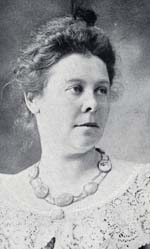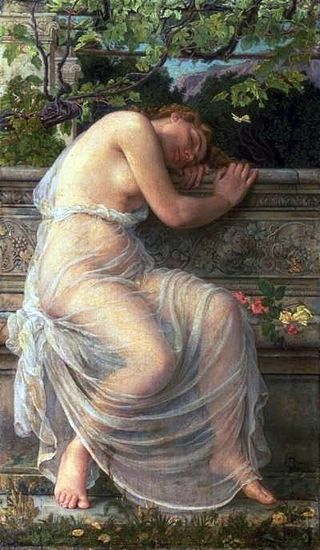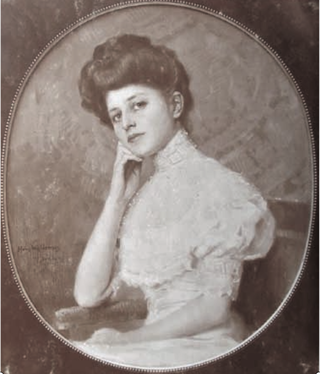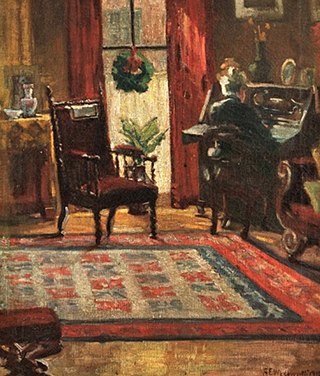
The World's Columbian Exposition, also known as the Chicago World's Fair, was a world's fair held in Chicago from May 5 to October 31, 1893, to celebrate the 400th anniversary of Christopher Columbus's arrival in the New World in 1492. The centerpiece of the Fair, held in Jackson Park, was a large water pool representing the voyage that Columbus took to the New World. Chicago won the right to host the fair over several competing cities, including New York City, Washington, D.C., and St. Louis. The exposition was an influential social and cultural event and had a profound effect on American architecture, the arts, American industrial optimism, and Chicago's image.

Mary Ella Dignam was a Canadian painter, teacher, and art organizer best remembered as the founder and first president of the Women's Art Association of Canada (WAAC).

Edith Corbet née Edenborough was a Victorian landscape painter, having close associations with the Macchiaioli group, who, in a break with tradition, painted outdoors in order to capture natural light effects and favoured a panoramic format for their paintings.

Enella Benedict was an American realism and landscape painter. She taught at the School of the Art Institute of Chicago and was a founder and director for nearly 50 years for the Art School at the Hull House.
Doris Raab was a German etcher and engraver.

Lily Irene Jackson, was an American artist and arts organizer active in West Virginia who specialized in paintings of animals.

The Woman's Building was designed and built in June 1892, for the World's Columbian Exposition held in Chicago in 1893; under the auspices of the Board of Lady Managers. Out of the twelve main buildings for the Exhibition, the Woman's Building was the first to be completed. It had an exhibition space as well as an assembly room, a library, and a Hall of Honor. The History of the World's Fair states, "It will be a long time before such an aggregation of woman's work, as may now be seen in the Woman's Building, can be gathered from all parts of the world again." The purpose of the building was to highlight woman's achievements, and challenge the traditional ways of thinking at the time it was built. The Woman's Building was planned, designed, and decorated entirely by women under the direction of the board of lady managers.
Camilla Friedlander later Camilla Edle von Malheim Friedländer (1856−1928) was an Austrian painter. She was known for her still lifes.

Countess Maria von Kalckreuth (1857-1897) was a German painter known for her portraits.

Marie von Keudell (1838–1918) was a German painter known for her landscape painting.
Johanna Kirsch (1856-1907) was a German painter known for her portrait and genre paintings.
Clara Augusta Amalie Emma Lobedan (1840–1918) was a German painter, watercolorist, pastelist, ceramicist, and craftsman.
Auguste Ludwig (1834-1901) was a German genre painter.
Auguste Schepp (1846–1905) was a German painter.
Bertha Schrader was a German painter, lithographer, and woodblock print-maker.
Helene Marie Stromeyer was a German painter known for her floral and landscape paintings.

Lilli Wislicenus, born Elisabeth Emma Charlotte Finzelberg (1872–1939) was a German sculptor.
Olga Fedorovna Beggrow-Hartmann (1862–1922) was a German-Russian painter.

Christine Sloan Bredin (1860–1934) was an American painter, illustrator, and teacher.

Adelaide Elizabeth Wadsworth (1844-1928) was an American painter.










